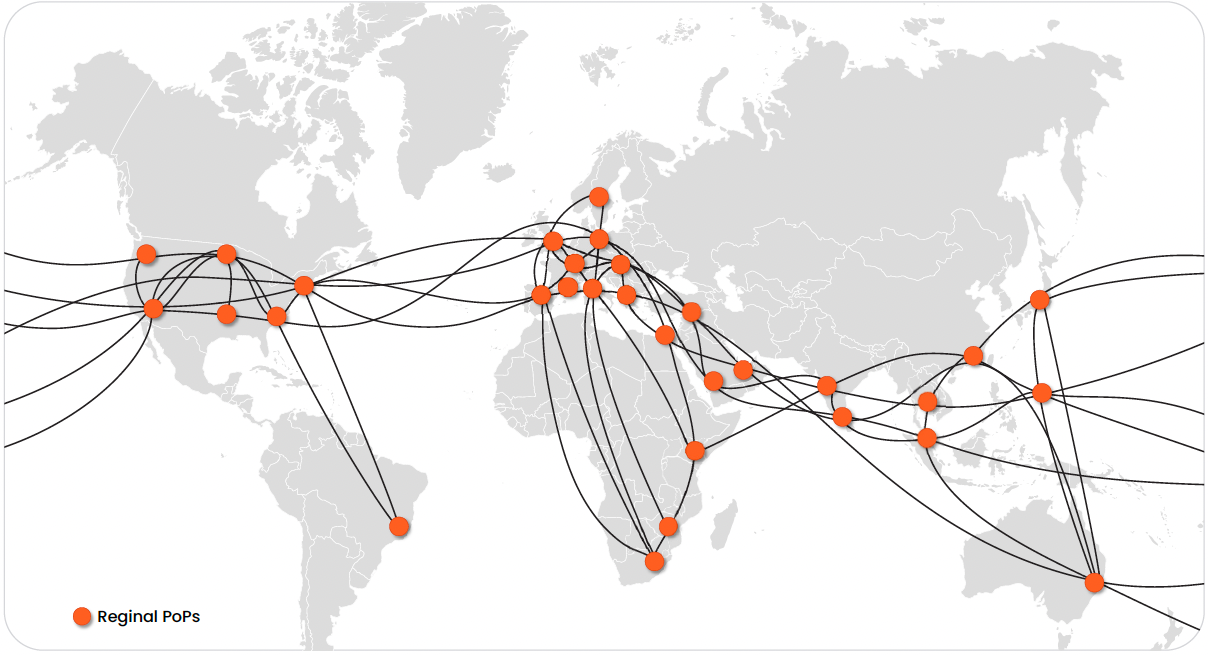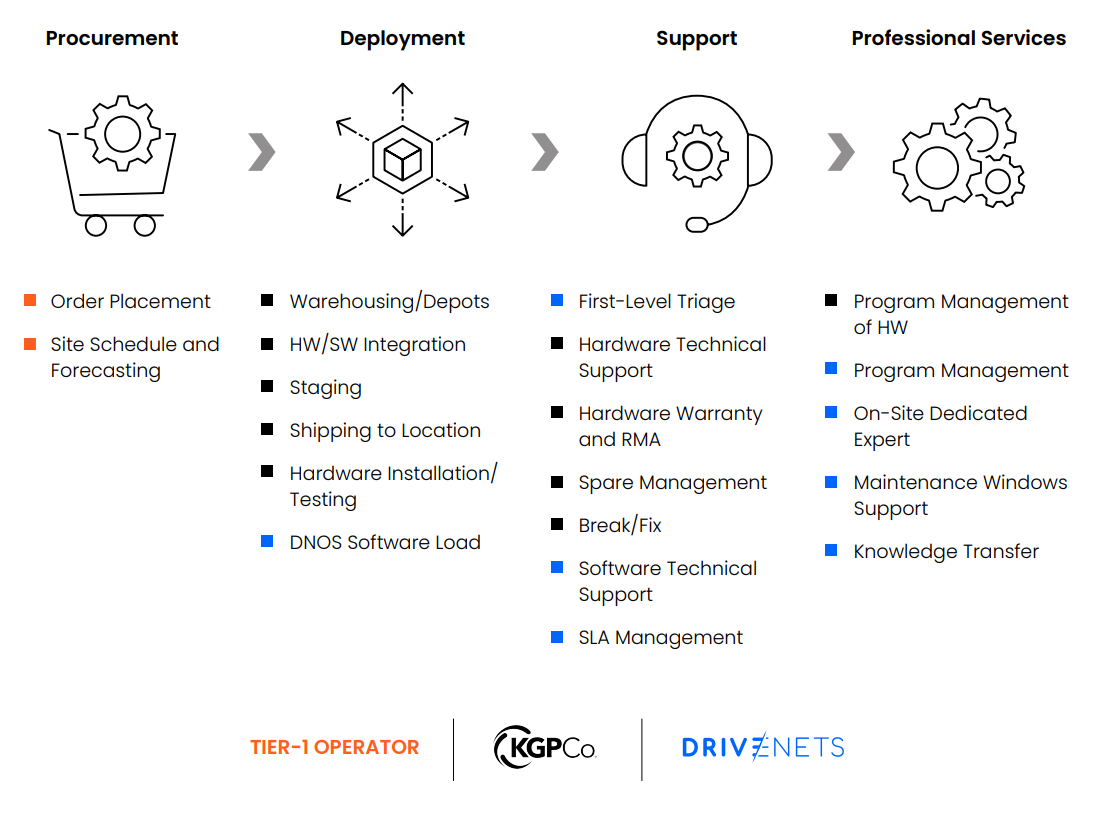Case StudiesMarch 15, 2024
Transforming Global IP Transport Backbone with a Disaggregated Solution

CHALLENGES
Aiming to transform its global IP transport backbone network infrastructure, this tier-1 operator faced a series of challenges for ensuring the successful replacement of its Ju niper MX platforms. These challenges included:
- Modernizing international and domestic networks to a multi-terabit capacity: At about 100 sites across the globe, the operator had to transition seamlessly from Juniper MX routing platforms to a modern disaggregated network architecture, while introducing 400Gbps rate and open optics.
- Reducing TCO: The operator was interested in achieving significant savings compared to the total cost of ownership of its legacy hardware.
- Overcoming backplane limitations: Traditional transport networks come with backplane limitations that can hinder flexibility and scalability. It became imperative for the tier-1 operator to develop a more adaptable and scalable network infrastructure that could meet its evolving service scale demands free from the confines of traditional hardware limitations.
- Achieving operational efficiency: Transitioning towards a disaggregated architecture required the operator to address specific challenges related to software-driven network operations.
Each challenge needed to be closely addressed to ensure that the operator‘s network could accommodate current demands, while future-proofing the network for scalability and innovation..
SOLUTION
Confronted with the need to upgrade core routers and break free from the constraints of traditional network infrastructures, the tier-1 operator initiated a transformative journey by adopting the field-proven DriveNets Network Cloud solution. DriveNets Distributed Disaggregated Chassis (DDC) solution exceeded the operator’s expectations during lab testing, and quickly was ready for deployment across its global network. Since its initial deployment in 2023, DriveNets Network Cloud demonstrated exceptional capabilities in simplifying the operator’s backbone network operations and handling substantial core traffic workloads reliably, highlighting the power and efficiency of a software-based network solution.
Below is the operational model depicting the project’s roles and responsibilities. KGPCo supported the global network deployment, delivering the hardware and offering return merchandise authorization (RMA) support.

RESULTS
By deploying DriveNets Network Cloud, the tier-1 operator achieved the following benefits:
- Reduced TCO: achieving up to a 30% decrease in total cost of ownership
- Automation to accelerate network transformation: enhancing operational efficiency, significantly reducing network upgrade time
- Increased capacity: achieving 30% improved capacity due to higher port density per box (32X400GE) of Network Cloud Packet Forwarder (NCP) compared to Juniper MX
- Greater optics flexibility: empowering utilization of third-party optics vs. Juniper’s proprietary optics
- Incremental scaling: enabling pay-for-what-you-use approach
- Lower number of SKUs: streamlining procurement and reducing inventory costs
- Extended hardware longevity: allowing implementation of next-gen NCPs within DriveNets clusters
- Circular economy (white box reusability): enabling reuse of stand-alone NCPs in future clusters as “line cards” for capacity expansion
SUMMARY
Connecting over 80% of the world’s cloud giants and four out of five mobile subscribers worldwide through its expansive network, the tier-1 operator’s partnership with DriveNets marks a milestone for their network strategy, with plans to deploy DriveNets Network Cloud solution in over 100 sites across its global network.
Also, the operator plans to expand its edge infrastructure with a disaggregated architecture in the near future. By adopting a unified hardware strategy from core to edge, the tier-1 operator can utilize DDC’s unified hardware approach, employing standard white boxes for all network domains. For future projects across various network domains, the tier-1 operator can utilize these same white box building blocks to construct routers of any size. This method reduces the number of network components, lowers inventory costs, streamlines the supply chain, and simplifies warehousing processes.
This forward-thinking approach ensures that the tier-1 operator will remain at the forefront of network innovation, ready to meet future demands for its global IP transport network.







